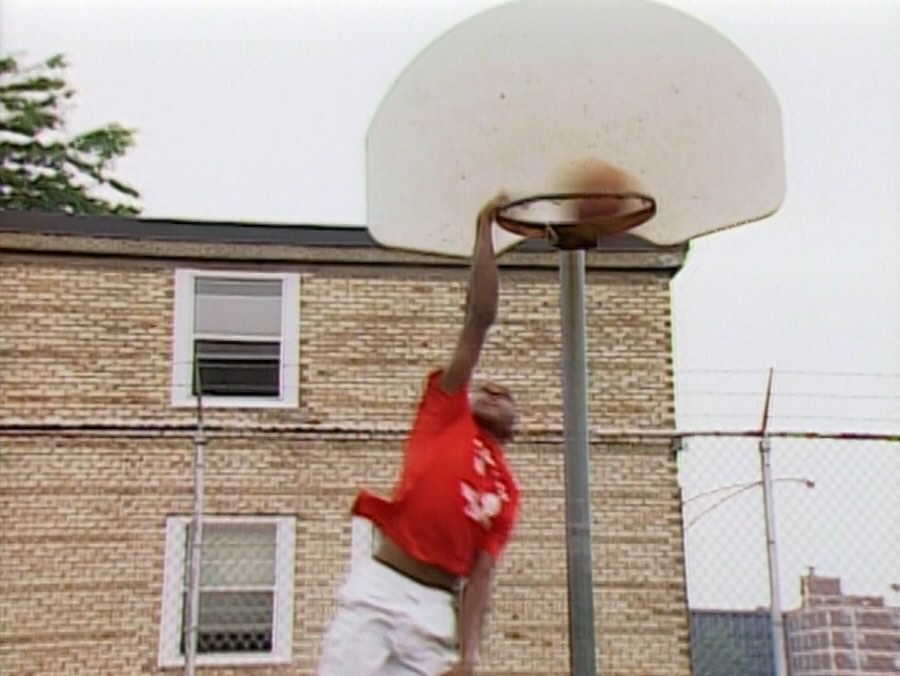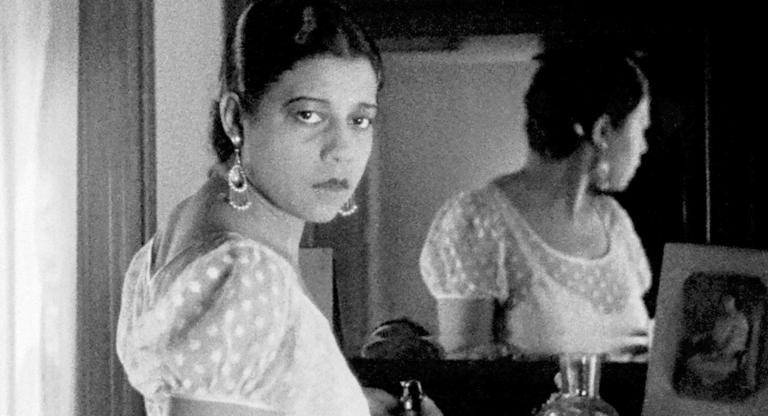A logline for Hoop Dreams (1994) might go something like: the story of two boys, Arthur Agee and William Gates, navigating their teenage years while striving for success as basketball players. While accurate, such a summary belies the film’s immense sociological scope in giving identity to the invisible hands of institutions that shape life in the United States. But Hoop Dreams’s unadorned approach and adoption of dramatic narrative arcs, structured after dominant Hollywood filmmaking, threaten to obfuscate how radical an endeavor it really was. The breadth and depth of its influence in the intervening years also partially elides the immense formal daring inherent in the film’s conceit: that of a continuous vérité project whose production spans half a decade.
Documentarians had engaged with the passage of time on an annual scale before, but it was most often either diaristic autobiography—as in the works of Anne Charlotte Robertson, Jonas Mekas, and Ed Pincus—or periodic check-ins with long stretches in-between filming—as in Michael Apted’s Up Series (1964 - 2019) and follow-ups to television’s An American Family (1973) and Who Are the DeBolts? And Where Did They Get Nineteen Kids? (1977). Frederick Wiseman had made the condensation of durational reality into narrative cinema his stock-in-trade, but his shoots typically only lasted a month or so, and his signature mosaic structure evaded strict linear narrative. With Hoop Dreams, Peter Gilbert, Steve James, and Frederick Marx—all of whom share an “A Film By” credit—combined the diarists’ interest in human narrative and patience—250 hours of raw video in total—with Wiseman’s sociological extroversion to depict the accumulation of events, encounters, and attitudes in a manner only afforded by the passage of long stretches of time.
This approach allows a scene like the Agee’s visit to a local church, spurred by a recent change of heart from pater familias Bo, to be imbued with added profundity. Earlier in the film, we see the pain that Arthur’s father has caused his family and himself over the years. At church, we recall those earlier scenes to recognize Arthur’s skepticism about his father turning a new leaf through his facial expressions and body language, which might simply look like a teenager’s lack of interest to attend church if seen isolated from the rest of the film. At the same time, we also share Arthur’s mother Sheila’s determined optimism about her husband’s sincerity. We are not merely shown that personal attitudes and interpersonal dynamics evolve and shift, but how they do so through the assemblage and presentation of life in a way that was previously only afforded in fictional films that manufactured years of cinematic time with just a few weeks of actual production.
Some critics writing contemporaneously about the film, understandably wary about its unprecedented crossover success with mainstream audiences—Hoop Dreams earned $7 million at the domestic box office—figured that it simply accepts the pot of gold fantasy perpetuated by the basketball industrial complex it depicts. How else to explain its ready digestibility among those socialized by systems it supposedly critiques? But that position seems near-impossible to glean viewing the film now, as its scathing condemnation of American capitalism’s required commodification of everything—from play, to education, to people—feels largely absent from current film trends, non-fiction or otherwise.
Hoop Dreams went through a period of canonization in the 2000s. It was selected for preservation in the United States National Film Registry in 2005 and topped the International Documentary Association’s greatest documentaries list in 2007. However, the film’s star has fallen with the rise of documentaries that have engaged with, and built upon, the foundation of its formal innovations, such as Bing Liu’s Minding the Gap (2018) and RaMell Ross’s Hale County This Morning, This Evening (2018), both of which were shot over the course of multiple years. Though Hoop Dreams was voted #17 on Sight & Sounds’s 2014 Greatest Documentaries of All Time poll, several films it bested on that list gained enough esteem to make it onto the more prestigious (and expanded) 2022 Greatest Films of All Time poll, while Hoop Dreams missed the cut. The film’s 30th anniversary last year went largely ignored in cinephilic circles, due in part to its re-release being buried as an exclusive of the Drafthouse theater chain. But considered from the risk-averse contemporary documentary landscape typified by streamers’ demands for celebrity and true crime subject matter—often quickly produced to satisfy a constant supply of new “originals” and neatly structured in line with algorithmic demands—Hoop Dreams endures as a seminal work of radical cinema.
Hoop Dreams screens this Thursday, February 6, at the 4 Star Theater, presented as part of Drunken Film Festival’s Docs Are Good series.




